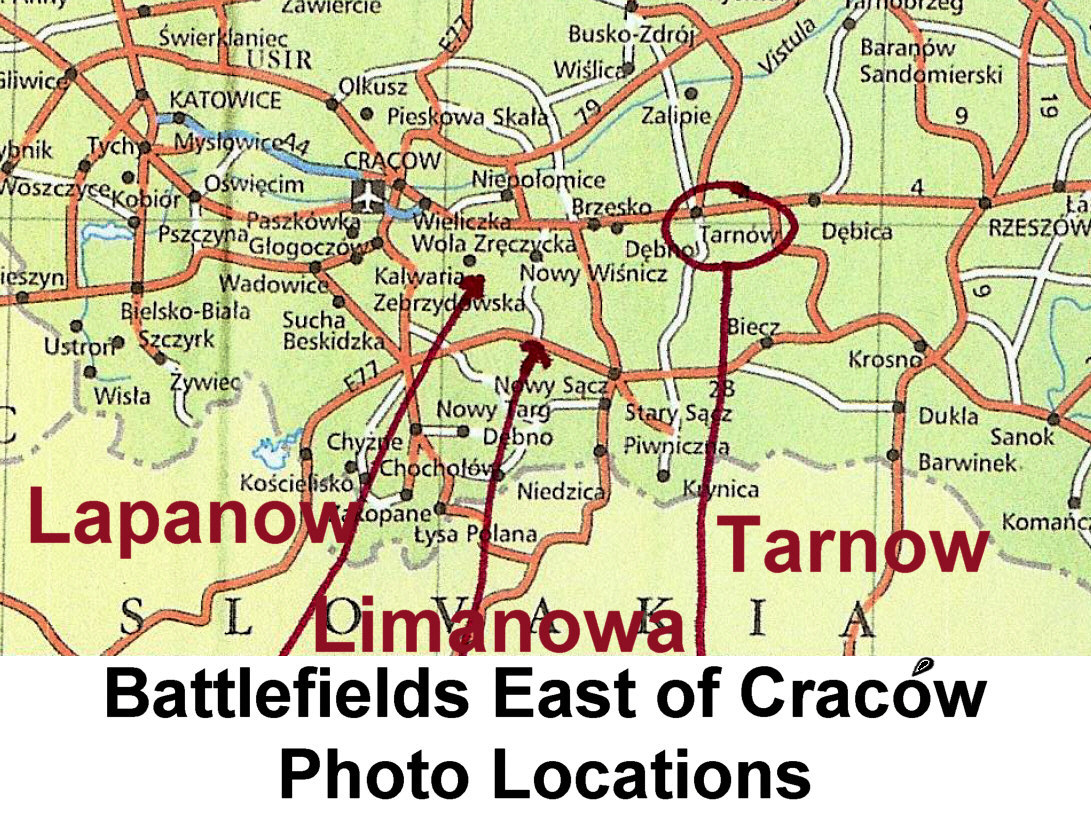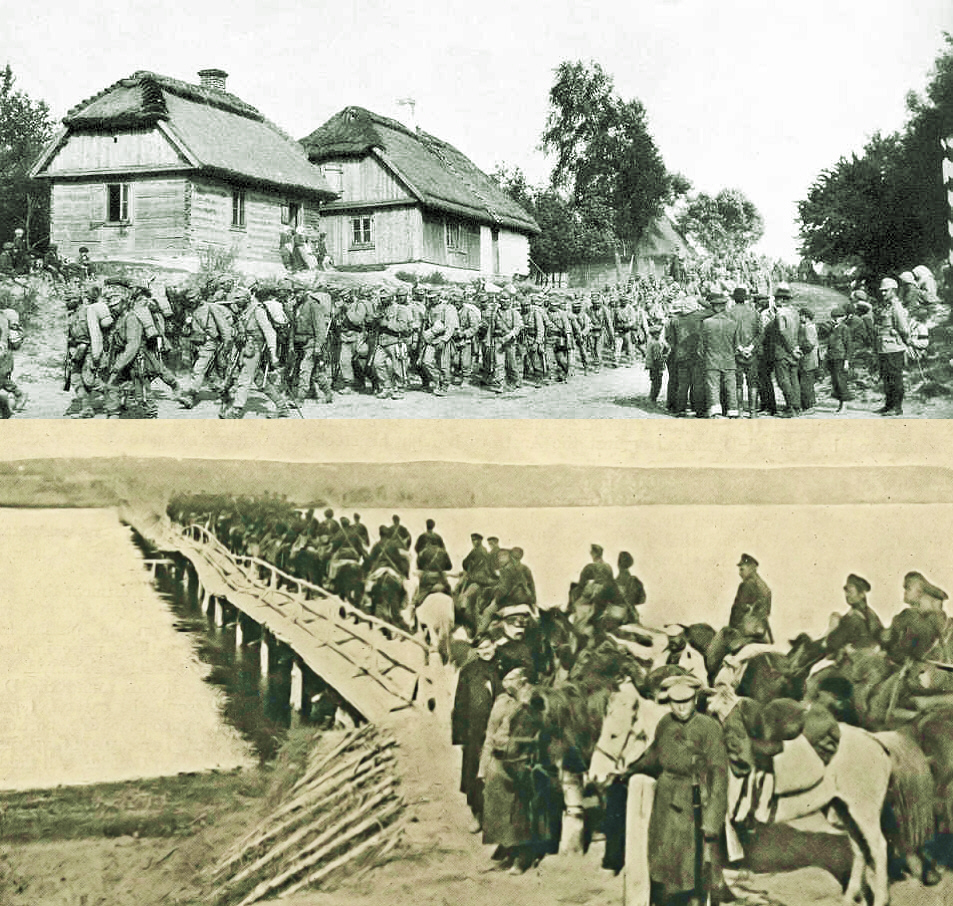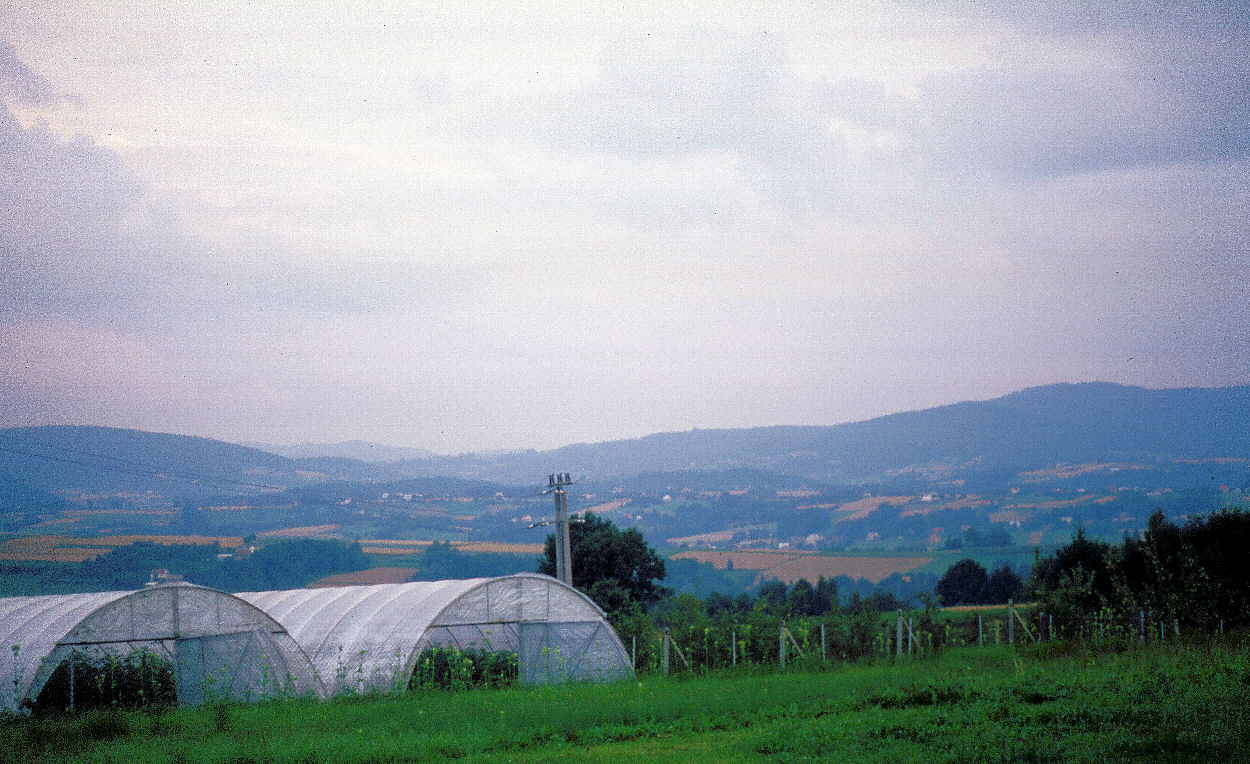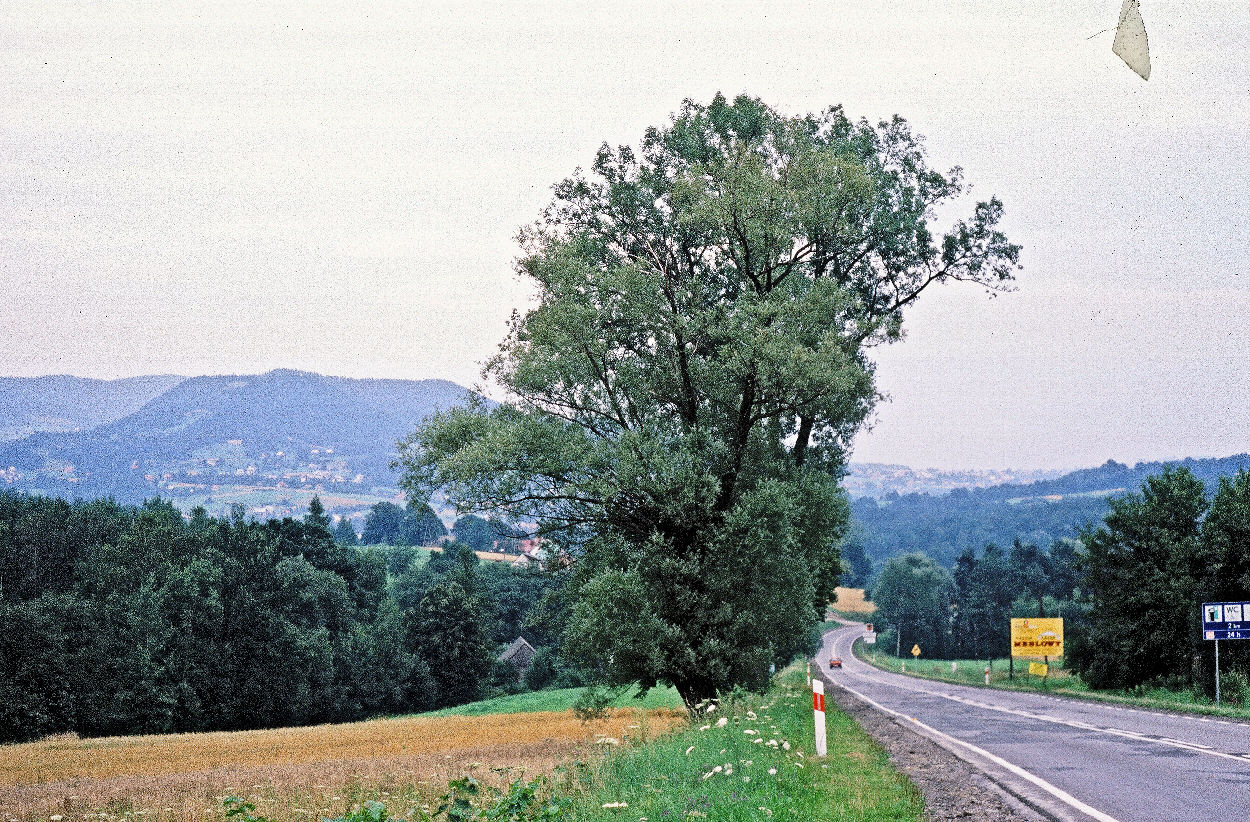Absent Polish Memorials: 1914-1915 Battles for Galicia, East of Craców
Click on Image to Expand

As I discussed in two Roads to the Great War postings last month [14 & 15 August 2013], I believe Poland should provide historical markers or monuments to identify the locations of major World War 1 battles, like Tannenberg, and to acknowledge their historical importance. Today and tomorrow, I am going to suggest several more, all of which are located in Galicia, far south of the Tannenberg battlefield. Early in the Great War several key battles were fought in Galicia, east of Craców, that are often overlooked in histories of the war.

In Galicia:

Lapanów stood as the northern flank of the battle. This photo taken in the small village of Lapanów looks south in the general direction of Limanowa (which is too far away to be seen). Craców lies many miles behind the right shoulder of the photographer. The Austro-Hungarian attack would have been from right to left.

Limanowa stood in the southern sector of the December 1914 battle between the Austro-Hungarians and the the Russians. This picture looks east toward the town. The Austro-Hungarians would have been attacking in a generally eastward direction. The same road continues east beyond the town and in the direction of Gorlice, which was important for the German breakthrough on the Eastern Front in mid-1915.
Battle of Limanowa-Lapanów, 1-13 December 1914
In December 1914 around the towns of Lapanów and Limanowa (see map), a victory by Archduke Josef Ferdinand's 4th Army saved Austria-Hungary from disaster. Limanowa-Lapanow was the last battle of the war in which the Austro-Hungarian Army could claim a victory against the Russians based on its own initiative, its own commanders, and its own troops. The Habsburg force drove squarely into a weak spot created by a boundary line between two different Russian armies. The Austro-Hungarians promptly sent the Russians reeling back forty miles. Russian plans for both a drive south of Craców (toward Germany) and an attack through the Carpathians (onto the Hungarian plain toward Budapest) were preempted. The Russian 3rd army was beaten and forced to retreat east, ending its opportunity to reach Craców. To avoid being surrounded, the Russian 8th Army also had to retreat, stopping its advance toward the Hungarian plains. The author, a casual tourist, could spot no monuments or cemeteries while exploring the area around Limanowa and Lapanów nor the thirty miles between them.
Click on Image to Expand

In Galicia:
Austro-Hungarian Infantry Advancing, Russian Cavalry Withdrawing
Click on Image to Expand

Lapanów stood as the northern flank of the battle. This photo taken in the small village of Lapanów looks south in the general direction of Limanowa (which is too far away to be seen). Craców lies many miles behind the right shoulder of the photographer. The Austro-Hungarian attack would have been from right to left.
(Photo by REW)
Click on Image to Expand

Limanowa stood in the southern sector of the December 1914 battle between the Austro-Hungarians and the the Russians. This picture looks east toward the town. The Austro-Hungarians would have been attacking in a generally eastward direction. The same road continues east beyond the town and in the direction of Gorlice, which was important for the German breakthrough on the Eastern Front in mid-1915.
(Photo by REW)
The Gorlice-Tarnow Offensive, 1 May - 19 September, 1915
A similar lack of memorialization exists just to the east at Tarnow. After Limanowa-Lapanow it would be the German army, not the Habsburg army, which controlled all Central Power military operations in Poland (Keegan, 2000). Picking up in the narrow gap (between the Carpathians and the Vistula River) where the Limanowa-Lapanow victory had left off, the Germans launched an offensive on May 2, 1915 (Keegan, 2000). This Gorlice-Tarnow offensive drove the Russians not only out of recently occupied Austrian Poland but also out of Warsaw and the rest of Russian Poland (which they had occupied for a century). The German thrust even cost the Russians four of their traditional frontier fortresses (including the soon-to-be-famous treaty town of Brest-Litovsk). Despite the dramatic impact of this event, the modern visitor driving through the center of Tarnow along the road between Craców and the fortress city of Przemsyl [featured in tomorrow's posting] sees no reminders of these major events.
Tarnow was in the northern sector of this battle whereas Gorlice was in the south. This photo looks east at Tarnow in the general direction of the German advance.
Click on Image to Expand
Tarnow was in the northern sector of this battle whereas Gorlice was in the south. This photo looks east at Tarnow in the general direction of the German advance.
(Photo REW)
Rodney Earl Walton
| Two studies of the Galicia campaigns of 1914 and 1915 | Order Now |
Order Now |


I would think after all the horror of WW2 in Poland they wouldn't want to even think of what happen in the first war!!!!!My grand folks couldn't get out of Poland fast enough before 1914....
ReplyDeleteBlood on the Snow is a horrible book; no editing to speak of. Breakthrough is excelelnt as well as "German Strategy and the Path to Verdun" by Robert T. Foley. This is mainly a military biography of Falkenhayn and how he came to his decision on attacking Verdun, but, it contains excellent material on the Gorlice Tarnow Operation that he was in charge of as CnC of the Ost Army. Even all these books leave much to be desired; maps in all of them are either non-existant (Blood on the Snow) or are just sketchs. Not anywhere close to the amount of material available on the Somme or 1914 in the West.
ReplyDeleteNice pictures of the terrain Rodney. I'm thinking Poland would just like to forget all about the various "occupations" that they have endured over the centuries.
I taught English in Limanowa from Sept. 1992 - Jan 1993 and from Sept.1994 - Jan.1995. I was at the 80th anniversary memorial service in the war cemetery in Jabloniec just 2km east of Limanowa. I have photos of this event - there are memorials there and there is a smaller WWII cemetery the Soviets created across the lane - apparently they didn't want the Soviet dead buried in the same area as the Tzarist dead. please contact llewelyn37@talktalk.net is you want more information.
ReplyDeletehttp://www.ziemia-limanowska.pl/?p=65958
ReplyDeletehttp://www.youtube.com/watch?v=WQ9JnO5NGZQ#t=106
http://eksploratorzy.com.pl/viewtopic.php?f=171&t=7184
ReplyDeleteI have just come home after passing the Easter with my girlfriend´s family near Limanowa. We have been in a small cemetery with tombstones of Austrian and Russian soldiers, in the same cemetery, grave besides grave. In each tomb there were 10-20 soldiers buried. In total, around 400 between the two armies.
ReplyDeleteWell, she just has found the wikipedia page for this cemetery:
http://pl.wikipedia.org/wiki/Cmentarz_wojenny_nr_303_-_Rajbrot
Unfortunatelly, it is in Polish and I still do not speak it. :( But you can keep digging into the history of that battle from there.
In "Western Galicia" which was the theater of the two major WW I operations described, there are many war cemeteries -- several hundred of them, actually. But, if you want to visit some them, it definitely helps if you speak Polish. There are few road signs at major highways. In fact, most of those cemeteries are located at spots "deep in the countryside", one has to take secondary roads or "country roads" to reach them. A good idea is to find the locations beforehand, and then to plan the trip. There is much info about the cemeteries, e.g., in the Web -- but most of such Web sites are in Polish. I happen to be a Polish native speaker, so it's not a big problem for me, but I can imagine how difficult it may be for a foreign tourist who has only a vague info that "there are many WW I cemeteries in the area". Local people seldom speak English. A good idea may be to write on a piece of paper, with big letters: "KTÓRĘDY DO CMENTARZA Z PIERWSZEJ WOJNY?" ("How can I get to the WW I cementary?") -- local folks will start talking fast in Polish, which may not be of great help, but, most probabl they will also show you the direction using the "sign language".
ReplyDeleteBy the way, my Mom's stepfather served in 1915 in an Austrian military unit whose task was to exhume the fallen soldiers from the "ad hoc" small graves at former battlefields and re-bury them at larger cemeteries. In the 1960s and early 1970s, we often toured the countryside in the Tarnów and Nowy Sącz together, on foot or by bus -- and quite often, when we entered a village, he exclaimed: "Oh! I do remember this church! Not far from here, we were re-burying the dead brought here from the battlefields!". Why the churches were so important to him, no other landmarks? Well, he was an architect by profession, he had a fantastic memory. Usually, the church in a given village was the only "object of interest" for an architect, all other building were non-distinct huts.
Tom, from Corvallis, Oregon, USA.
http://limanowa.in/wydarzenia;quot-echo-tego-czynu-odbijac-sie-bedzie-w-wiecznoscquot,20008.html
Deletehttp://limanowa.in/wydarzenia;rekonstrukcja-bitwy-pod-limanowa-zobacz-zdjecia-i-kilka-ujec-wideo,20007.html
We made an animated film about this battle with Institute and Museum of Military History. The premier was in Limanova in last year. If you are interested, you will see on youtube (the narration is hungarian, but we made english subtitle):
ReplyDeletehttps://www.youtube.com/watch?v=zNWvcLaGEzo
Warfare is a fascinating subject. Despite the dubious morality of using violence to achieve personal or political aims. It remains that conflict has been used to do just that throughout recorded history.
ReplyDeleteYour article is very well done, a good read.